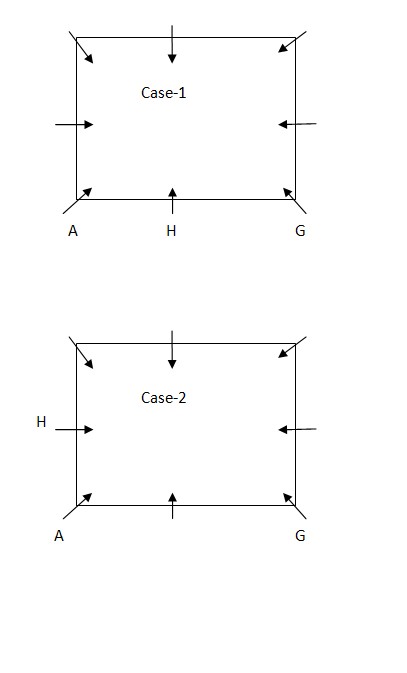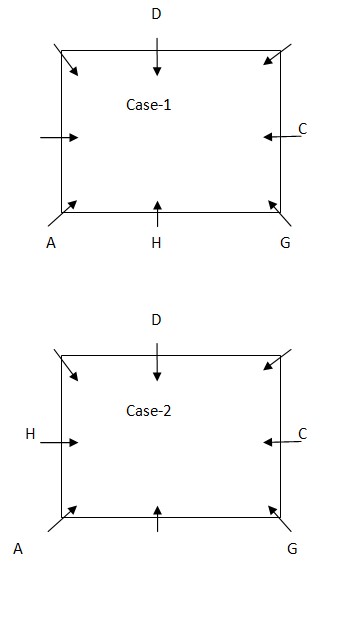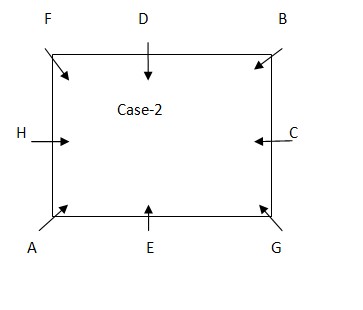Question
In which of the following combination both the persons
are facing towards each other? Study the following information carefully and answer the below questions Eight persons – A, B, C, D, E, F, G and H are sitting in the square table such that all of them are facing towards the center. Four persons are sitting in the middle of the sides of the table and four persons are sitting at the corner of the table. All the information is not necessarily in the same order. A sits second to the left of G, who sits at one of the corner of the table. H sits either to the immediate right or to the immediate left of A. D sits opposite to the one who sits second to the left of C. C sits in the middle of the sides of table. D is neither the immediate neighbor of G nor A. E is the immediate neighbor of either of A or F, but not the both. B sits second to the left of F.Solution
A sits second to the left of G, who sits at one of the corner of the table. H sits either to the immediate right or to the immediate left of A. From the above condition, there are two possibilities.  D sits opposite to the one who sits second to the left of C. C sits in the middle of the sides of table. D is neither the immediate neighbor of G nor A
D sits opposite to the one who sits second to the left of C. C sits in the middle of the sides of table. D is neither the immediate neighbor of G nor A  E is the immediate neighbor of either of A or F, but not the both. B sits second to the left of F. From the above condition, case1 gets eliminated. Case 2 shows the final arrangement.
E is the immediate neighbor of either of A or F, but not the both. B sits second to the left of F. From the above condition, case1 gets eliminated. Case 2 shows the final arrangement. 
Who is the Chairman of the Central Board of Direct Taxes?
What is the title of the book that won the Pulitzer Prize for Fiction in 2024?
Which South American country adopted India's UPI system for instant digital payments?
Where is the headquarters of the European Union (EU) located?
Which ministry has launched ‘SVANidhi se Samriddhi’ program in additional 126 cities across 14 States/ UTs?
Which of the following will be the official sponsor of Indian contingent at Asian Games?
What is the primary purpose of the 25T Bollard Pull Tug 'Mahabali' launched at M/s Shoft Shipyard Pvt Ltd, Bharuch, Gujarat?
In response to Cesium-137 contamination in Indonesia, what specific medical aid did India supply in October 2025?
What were the themes for Republic Day 2024, symbolizing the aspirations and democratic ethos of the nation?
India and _________ will jointly observe Maitri Divas or friendship day on 6th December.


